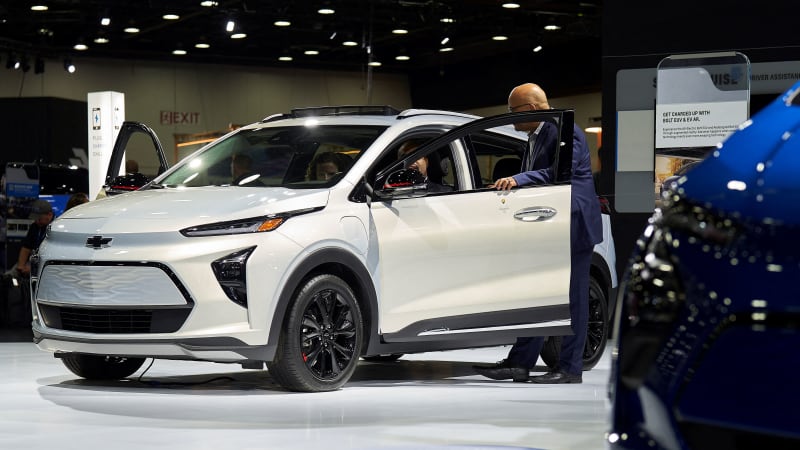GM-UAW agreement expected to include a more affordable Bolt EUV

DETROIT — General Motors is expected build a more affordable version of the Chevrolet Bolt EUV in Kansas and a new series of premium electric vehicles for Cadillac and Chevrolet in Michigan as part of its planned $13.3 billion in investments in U.S. facilities, sources told Reuters.
The outline of GM’s planned investments through April 2028 was laid out on Saturday in a UAW summary of the new contract it negotiated with GM.
Most of the broader investment was already in place. But the UAW document noted that GM expects to invest $1.25 billion in its Lansing Grand River plant in Michigan and $391 million in its Fairfax, Kansas, plant.
GM is considering whether to build a lower-cost version of the Bolt electric utility vehicle at the Fairfax plant in 2025 and the premium EVs for Cadillac and Chevy — including a pure electric performance model with the Corvette name — in Lansing beginning in 2027, according to sources familiar with the automaker’s thinking, who asked not to be identified.
GM said on Monday it would not comment on the tentative agreement pending ratification by the UAW.
In a statement, the company said, “We’ll have more specifics around product details moving forward.”
The UAW summary did not specify products or timing for GM’s Fairfax and Lansing plants. GM currently builds the Chevrolet Malibu and Cadillac XT at Fairfax and the Cadillac CT4 and CT5 and Chevrolet Camaro in Lansing. All of the vehicles have combustion engines.
Chief Executive Officer Mary Barra has said the current Bolt will be phased out of production at the end of this year. She said GM expects to introduce a revised Bolt with lower-cost batteries, but has not said when or where the new model will be launched.
The bulk of GM’s U.S. investments over the contract’s 4½ years — about $9.1 billion — will go toward five vehicle assembly plants and seven parts plants to build electric vehicles and components, according to the UAW summary.
Both GM and Ford Motor in the past month have announced delays in future EV-related investments.
GM’s future product investment strategy diverges markedly from those of Ford and Stellantis, where the introduction of hybrid gas-electric models is aimed at consumers who are not prepared or cannot afford to move from combustion models to battery-electric vehicles, or BEVs. GM has not said if it plans to introduce new hybrid models in the U.S.
“GM’s transition is a little trickier given their focus on BEVs,” said Bill Rinna, director of Americas vehicle forecasts at GlobalData. “BEV demand over the life of the (UAW) contract is certainly not a given, so kicking the can down the road on that front may be justified.”
Sam Fiorani, vice president of global vehicle forecasting at AutoForecast Solutions, noted the timing on some of the EV investments by GM, Ford and Stellantis was “appropriately vague.”
“If the demand for EVs doesn’t pick up in the next two to three years, (the timing on) some of these new products could be premature,” he said.





